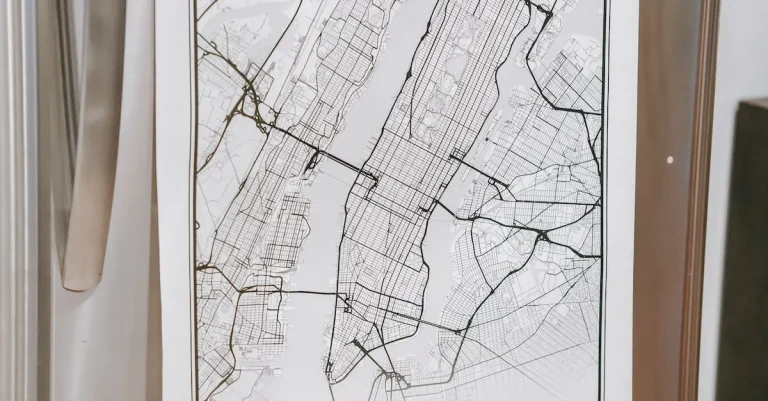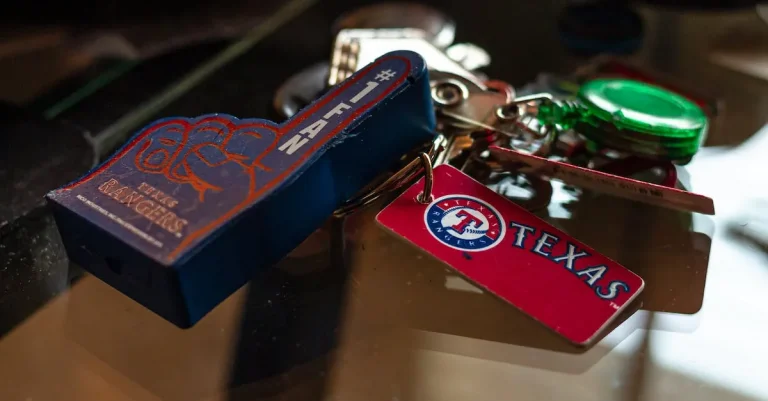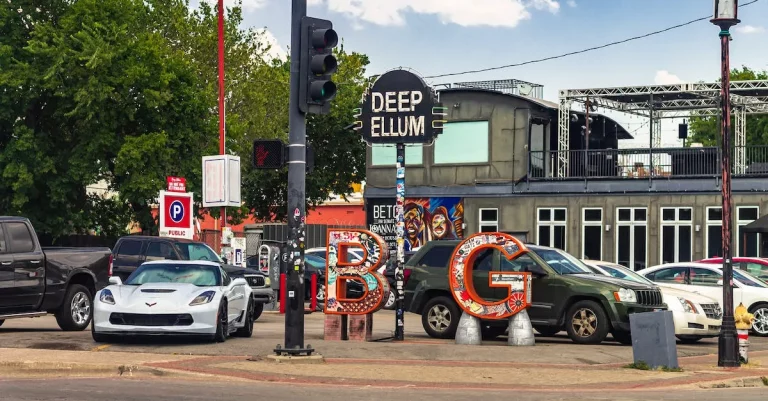Flipping Cars In California: A How-To Guide
Flipping cars – buying used vehicles, repairing them, and quickly reselling for profit – has become a popular side hustle, especially in auto-centric places like California. If you’re wondering if you can make money flipping cars in California, the short answer is: Yes, flipping cars can be a profitable endeavor in California if done properly following all legal requirements.
In this comprehensive guide, we’ll cover everything you need to know about successfully and legally flipping cars in California. We’ll look at acquiring inventory, making repairs, obtaining necessary licenses and permits, marketing and sales tactics, avoiding scams, and maximizing your profits. We’ll also review key regulations and restrictions specific to California.
Is Flipping Cars Profitable in California?
Flipping cars, the practice of buying used cars at a lower price and reselling them for a profit, can be a lucrative venture in California. The state’s large population, diverse car market, and strong economy make it an attractive location for car flippers.
However, it’s important to understand the profit margins and ROI realities before diving into this business.
Profit Margins and ROI Realities
When it comes to flipping cars in California, profit margins can vary significantly depending on various factors. The make, model, year, condition, and demand for the car are all crucial considerations that can affect the potential profit.
Additionally, the ability to negotiate a good deal when purchasing a used car is key to maximizing profit margins.
According to a study conducted by Kelley Blue Book, the average profit margin for flipping cars in California is around 10% to 15%. However, this figure can be higher if you are able to find undervalued cars or negotiate better deals.
It’s important to note that these profit margins are not guaranteed and can vary depending on market conditions and individual negotiation skills.
Another crucial aspect to consider is the return on investment (ROI). Flipping cars requires an initial investment in purchasing the vehicle, and the time and money spent on repairs, maintenance, and marketing.
It’s essential to factor in these costs when calculating the ROI to have a realistic understanding of the profitability of the venture.
Top Tips for Profitability
Flipping cars successfully in California requires careful planning and execution. Here are some top tips to increase profitability:
- Research the market: Stay updated on current car trends, popular models, and market demand. This knowledge will help you identify the right cars to buy and flip for a profit.
- Build a network: Establish connections with local dealerships, mechanics, and other industry professionals. This network can provide valuable insights, access to good deals, and potential buyers.
- Inspect and repair: Thoroughly inspect each car before purchasing and accurately assess the required repairs and maintenance. This will help you avoid costly surprises and ensure you can maximize the selling price.
- Pricing strategy: Set competitive but realistic prices for your flipped cars. Research similar models and their selling prices to ensure you are not overpricing or underpricing your vehicles.
- Market effectively: Utilize online platforms, social media, and local advertising to reach potential buyers. High-quality photos and detailed descriptions can significantly enhance your chances of selling the car quickly and at a good price.
By following these tips and staying informed about the market, flipping cars can be a profitable venture in California. However, it’s important to note that success in this business requires dedication, knowledge, and the ability to adapt to changing market conditions. Happy flipping!
Finding Good Deals on Used Cars
Auctions, dealerships, classifieds
When it comes to finding good deals on used cars in California, there are several options to consider. One popular option is to explore local car auctions. These auctions can be a treasure trove of vehicles at discounted prices.
Whether it’s a government auction or a private auction, you can often find a wide range of cars, from luxury vehicles to everyday cars, all at competitive prices.
Another avenue to explore is local dealerships. While dealerships may not always have the lowest prices, they often offer a variety of certified pre-owned cars, which come with warranties and thorough inspections.
Dealerships also provide the convenience of financing options, making it easier for buyers to purchase a vehicle.
Online classifieds platforms, such as Craigslist or Autotrader, are also great places to find used cars. These platforms connect buyers directly with sellers, often resulting in lower prices compared to dealerships.
However, it’s important to exercise caution when buying through classifieds and thoroughly inspect the vehicle before making a purchase.
Inspecting and appraising vehicles
Regardless of where you find a potential used car, it’s crucial to inspect and appraise the vehicle before making a purchase. This step is essential to ensure that you’re getting a good deal and a reliable vehicle. Here are a few tips to consider:
- Get a vehicle history report: Websites like Carfax or AutoCheck provide detailed reports on a vehicle’s history, including accidents, repairs, and title information.
- Bring a mechanic: If you’re not confident in your own mechanical knowledge, consider bringing a trusted mechanic to inspect the car before buying. They can identify any potential issues that may not be immediately visible.
- Take it for a test drive: Test driving the car allows you to get a feel for its condition and performance. Pay close attention to any unusual noises, vibrations, or handling issues.
- Consider a professional appraisal: If you’re unsure about the car’s value, consider getting a professional appraisal to ensure you’re paying a fair price.
By following these steps and exploring different avenues for finding used cars, you’ll be well-equipped to find great deals in California. Remember to always do your due diligence and take your time to ensure you’re making a wise investment.
Obtaining Required Licensing
Flipping cars in California can be a lucrative business venture, but before you can get started, it’s important to understand the licensing requirements involved. Here are two key considerations when it comes to obtaining the necessary licensing:
Dealer versus auto broker license
One of the first decisions you’ll need to make is whether to obtain a dealer license or an auto broker license. The main difference between the two is that a dealer license allows you to buy, sell, and exchange vehicles for a profit, while an auto broker license allows you to facilitate the sale of vehicles on behalf of others without actually owning them.
If you plan on flipping cars on your own, buying and selling them directly, a dealer license is typically the way to go. This license gives you the ability to legally operate as a car dealer and opens up more opportunities for profit.
However, if you prefer to act as a middleman, connecting buyers and sellers without actually owning the vehicles, an auto broker license might be a better fit for you.
Registering as an LLC
Once you’ve determined which type of license you need, the next step is to register your business as a Limited Liability Company (LLC). Registering as an LLC offers several benefits, including personal liability protection and potential tax advantages.
When registering as an LLC, you’ll need to choose a unique business name and file the necessary paperwork with the California Secretary of State. It’s also important to obtain an Employer Identification Number (EIN) from the IRS, which will be used for tax purposes.
Before starting the registration process, it’s recommended to consult with a legal professional or visit the official website of the California Secretary of State (www.sos.ca.gov) for detailed information and guidance on registering as an LLC in California.
They can provide you with the most up-to-date information regarding the specific requirements and steps involved.
By obtaining the required licensing and registering as an LLC, you’ll be taking the necessary steps to operate your car flipping business legally and professionally in California.
Making Repairs and Enhancements
Cosmetic improvements
When flipping cars in California, one of the key aspects to consider is making cosmetic improvements. Enhancing the appearance of the vehicle can significantly increase its value and appeal to potential buyers. Here are some cosmetic enhancements to focus on:
- Paint job: Giving the car a fresh coat of paint can make it look brand new. Choose a color that is popular and attractive to potential buyers.
- Interior detailing: Cleaning the interior thoroughly and making any necessary repairs or replacements can greatly improve the overall look and feel of the car.
- Upgraded wheels: Installing stylish and eye-catching wheels can instantly give the car a more modern and sporty appearance.
- Window tinting: Adding window tint not only enhances the car’s aesthetics but also provides privacy and protection from the sun.
Mechanical repairs
In addition to cosmetic improvements, it is crucial to address any mechanical issues the car may have. Ensuring that the vehicle is in good working condition will boost its value and give potential buyers confidence in their purchase. Here are some key mechanical repairs to consider:
- Engine maintenance: Regularly servicing the engine, changing oil, and replacing worn-out parts can greatly improve the car’s performance and reliability.
- Brake system inspection: Checking the brake pads, rotors, and brake fluid levels is essential for the safety of the driver and passengers.
- Suspension and steering: Ensuring that the suspension and steering components are in good condition will enhance the car’s handling and overall driving experience.
- Electrical system: Checking and repairing any electrical issues, such as faulty wiring or malfunctioning lights, is crucial for proper functionality and safety.
Remember, it is always a good idea to consult with a professional mechanic to assess the extent of repairs needed and to ensure that all improvements are done correctly. Flipping cars in California requires attention to detail and a commitment to providing a high-quality product to potential buyers.
Marketing and Selling Flipped Cars
Digital marketing strategies
When it comes to marketing your flipped cars, a strong online presence is essential. Utilizing digital marketing strategies can help you reach a wider audience and increase your chances of making a sale.
One effective strategy is to create a professional website or online portfolio where potential buyers can browse through your inventory. You can showcase high-quality images of the cars, provide detailed descriptions, and even include videos to give buyers a closer look at the vehicles.
Building a strong social media presence is also crucial. Platforms like Facebook, Instagram, and Twitter can be used to promote your flipped cars, engage with potential buyers, and share success stories.
Don’t forget to leverage search engine optimization techniques to ensure your listings appear at the top of search engine results.
Creating attractive listings
When creating listings for your flipped cars, it’s important to make them as attractive as possible to potential buyers. Start by writing compelling and detailed descriptions that highlight the unique features and selling points of the vehicle.
Use language that creates excitement and paints a vivid picture for the reader. Including high-quality images from different angles can also make a big difference. Make sure the photos are well-lit and showcase the car’s best attributes.
If possible, consider hiring a professional photographer to capture the essence of the vehicle. Additionally, providing a detailed history of the car’s maintenance and any upgrades or modifications can give buyers confidence in their purchase.
Finally, be sure to list the price competitively and provide clear contact information for interested buyers to reach out to you.
According to a recent study by Autotrader, cars with attractive listings receive 20% more inquiries than those with poor listings. So, take the time to craft compelling listings that will catch the attention of potential buyers and increase your chances of a successful sale.
Conclusion
With some diligent research, access to inventory, and a mechanical aptitude, flipping cars in California can be a rewarding way to earn significant income with a relatively low startup cost. By following all licensing and regulations, aspiring entrepreneurs can launch a profitable automotive flipping business.








